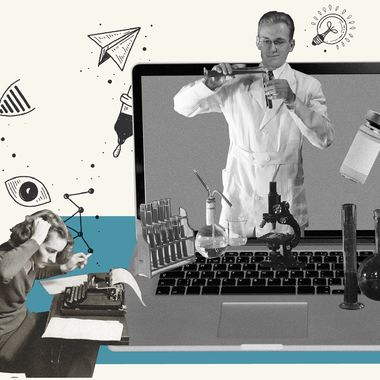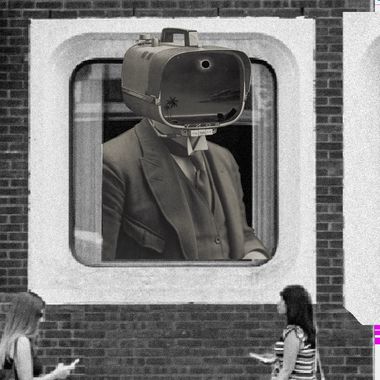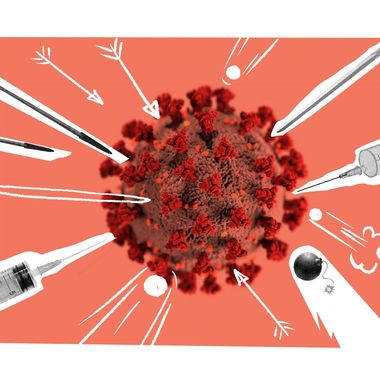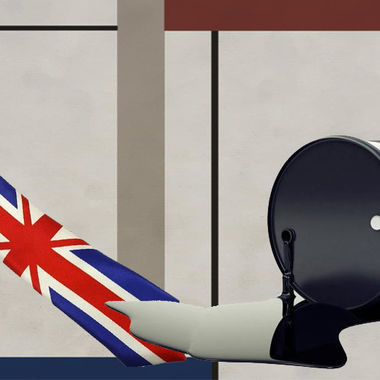Sun Apr 18 2021 · 6 min read
Legal Institutions for an Emerging Technology Economy

By Henry Nikogosyan
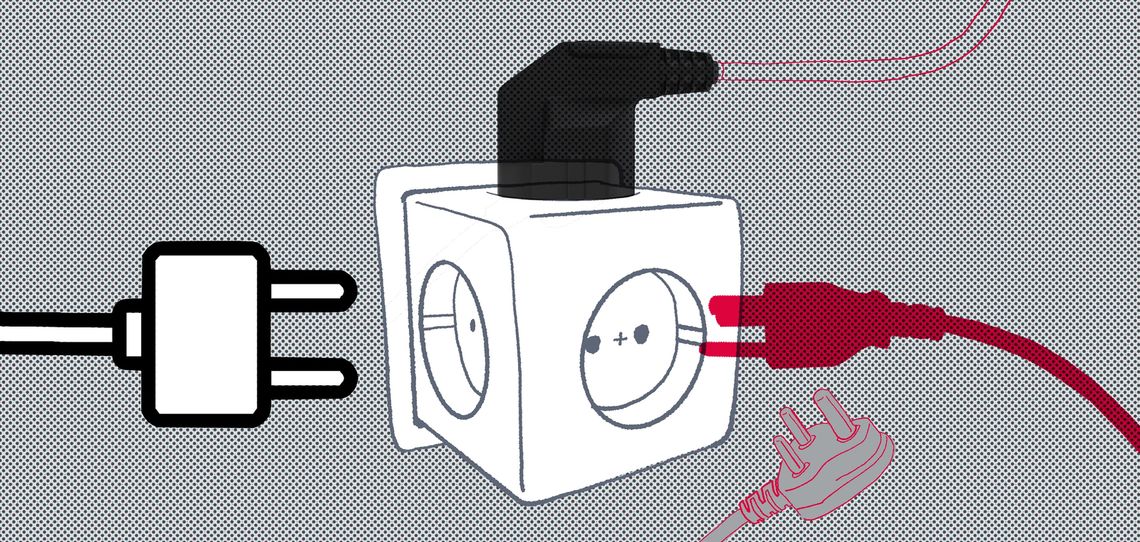
Illustration by Armine Shahbazyan.
Technology is the engine for developmental growth and prosperity because all sectors of the global economy rely on technology in one form or another. When there are advances in technology, those innovations eventually reach the broader economy and often increase productivity.
Armenia is on the path to become a serious player in the global technology sector. Continuing down this path will accelerate long-term economic growth by virtue of the technology sector’s relatively fast rate of growth. More importantly, it will also deepen Armenia’s integration into global markets and enrich the country with a sophisticated working class.
Skilled engineers and substantial investments are not enough to develop a world-class technology industry. Armenia will also need to foster an environment that allows technology companies to efficiently achieve their business goals. The key component of such an environment is having legal institutions that provide financially reasonable ways to resolve complex disputes.
This is not about combating corruption, which is also necessary. This is about having a legal system that can meet the administrative, business and intellectual property needs of technology companies—a task that challenges even the most developed nations. As Armenia’s technology industry matures, these needs will arise in greater numbers and be increasingly difficult to address.
The portion of Armenia’s legal institutions that deal with the technology industry cannot be developed in isolation from the overall legal system. Intellectual property and other fields of technology law constitute a small, elite practice area that shares the same resources as other areas of law. Improving the underlying mechanisms in a legal system that affect all areas of law is thus the first logical step. The secondary but still vital goal is to improve or, in some cases, implement new technology law-related programs that use those same underlying resources.
Optimizing the performance and long-term development of the legal sector depends on more than fundamental reforms targeted by organizations like the European Commission for the Efficiency of Justice. It also depends on setting up synergies. In the most general terms, the legal sector can be understood as a triad: (1) the judiciary and administrative bodies that regulate legal rights, (2) the legal education system and (3) practitioners. Each of these three components have remarkable potential to improve the performance of the legal sector as a whole, if they are set up properly. None can do it alone.
The pertinent question is how to properly arrange legal institutions. Fortunately, Armenia does not have to work from scratch. Most advanced nations have already accomplished these goals to varying degrees. The key is to understand how other nations create synergies and how Armenia can create similar synergies in its own institutions.
The federal judiciary in the United States is arguably the most important forum for the global technology industry and is therefore a worthy starting point. The United States has heavily integrated its institutions to optimize the performance of its legal sector.
One example of synergies in the United States’ legal system is its clerkship programs. Intelligent judges alone cannot competently and consistently adjudicate cases; they need resources. In addition to having a full complement of staff, federal judges in the United States typically hire two law clerks that spend almost all of their time directly assisting judges in resolving cases. The manner in which federal judges run this program greatly benefits the judiciary, but also has positive effects in law schools and among practitioners, which eventually feeds back into the judiciary.
Clerks are often newly-graduated lawyers that performed at the top of their class who take a temporary position with the federal judiciary that lasts one to two years. This allows courts to save resources by paying lower salaries while receiving two intelligent employees that significantly decrease a judge’s personal workload.
Aside from making the court’s work manageable, the clerkship program provides the best training opportunities for newly-graduated lawyers who often become first-pick hires for law firms. In other words, the judiciary pumps out a significant number of well-trained lawyers into the field every year. This improves the representation that practitioners provide to clients and the quality of work practitioners submit to the courts.
Because it is easier for courts to adjudicate well-litigated cases, having high-performing practitioners allows courts to more efficiently resolve cases. So, in addition to providing judges with additional employees, the clerkship program also decreases the amount of resources that courts need in the first place—a feedback loop typical in synergies.
Federal judges in the United States also have a fair amount of spare time, possibly because of the resources that clerkship programs provide. Many judges take advantage of this spare time to be involved in education programs. Almost every federal judge hosts externs from law schools who work in the federal judiciary for a few months and participate in the adjudication of cases. Some judges also teach classes in law schools. This gives law students access to high-quality teachers and invaluable practical experience early in their careers.
The benefits that law schools receive from the judiciary ultimately feeds back into the broader legal system. First, judges can hire better-educated clerks and sometimes even hire former externs. Second, the field receives a better-educated class of lawyers that provide higher-quality representation, which in turn eases the court’s work.
There are further details in how the clerkship program enhances the legal sector in the United States, and there are other ways in which the United States has set up synergies. Suffice it to stay, there are useful examples of high-performing legal institutions including many specific to technology law.
Any reform process must come from both a place of confidence and an official research initiative. Armenia’s legal institutions underwent substantial development during the Soviet era and the recent decades of independence. There have been legitimate accomplishments, and there are intelligent participants in Armenia’s legal sector. Moving forward will involve recognizing what is working, what is not, and what is missing. This principle equally applies when studying successful institutions in other nations. Everything in Armenia is not wrong. And everything abroad is not right.
Optimizing Armenia’s legal institutions begins with a government program in which practitioners conduct an official investigation. A holistic review of the system, which must include data analytics and extensive interviews, will allow independent investigators to acquire the information necessary for reforms. The final product would be a public report that identifies flaws in the broader legal system, as well as in institutions specific to technology law, and proposes several synergies that can address those flaws.
For instance, courts in Armenia already have considerable staff dedicated to assisting judges. This means the basic tools necessary for creating synergies common in a United States-like clerkship program are readily available. However, an investigation may reveal other ways for creating those same synergies or even synergies superior to those in the United States.
Now is also the time to consider how Armenia will use specialized judges for technology law matters. This is a growing trend throughout matured legal institutions and deserves serious attention. The United States, for example, (1) has administrative proceedings for specific patent and trademark issues, (2) typically assigns patent cases to trial judges that volunteer for their respective patent pilot program and (3) has a specialized appellate court for patent cases.
Armenia also has administrative bodies directed at patent and trademark issues but will soon have to decide how to modify those bodies and how to expand specialization to the judiciary. The final product will likely be notably different than the system in the United States, especially considering Armenia’s growing integration with European intellectual property institutions. The key is that the specialization be implemented in a manner that creates synergies specific to technology law, for example setting up clerkship programs with specialized judges and relevant administrative bodies.
A final principle in improving legal institutions is to confront that reformation is an unceasing task. Mature legal systems are not without flaws and are always undergoing gradual transformation. Although it may make sense for Armenia to make rapid changes now, the long-term goal is for governmental bodies to maintain a perpetual state of slow, thoughtful development.
creative tech
Gitak: Bridging Students With Supervisors for Science Research
By Tatev Mkrtumyan
With the absence of qualified academic supervisors and challenges with the quality of student research, there was a need to develop a platform where students and supervisors could meet remotely.
High Tech, Low Culture: Armenian Creative Industries and New Media
By Vahram Akimyan
This is not a cyberpunk essay about a dystopian future, but rather an attempt to take a pragmatic look at creative industries and the landscape of digital culture in Armenia.
new on EVN Report
Curbing COVID-19: The World Gets Vaccinated
By Gohar Abrahamyan
COVID-19 vaccines are being administered globally in the hopes of curbing the spread of the virus. Gohar Abrahamyan looks at the international race to develop the vaccine, the different vaccines currently being administered and Armenia’s position.
Baku’s Military Trophy Park and the Defeat of Humanity
By Maria Titizian
A Military Trophy Park-Museum dedicated to Azerbaijan’s military victory over Artsakh was inaugurated in Baku. It is a gruesome display that includes hundreds of helmets of Armenian soldiers killed in battle and grossly exaggerated life-size figures of dead and dying captives.
How Economic Ties Swayed European Countries Toward Azerbaijan
By Hovhannes Nazaretyan
Lucrative economic ties with Azerbaijan have influenced the United Kingdom, Italy and Hungary, among others, in their stance during and after the 2020 Artsakh War.
Comments
Hrair Kaladjian
4/18/2021, 3:39:33 PMAs a lawyer, I have been saying this for quite some time. Intellectual property theft by competitor countries is of concern. We must engage an international conference in Armenia comprised of legal experts to develop protections for Armenia ASAP.

